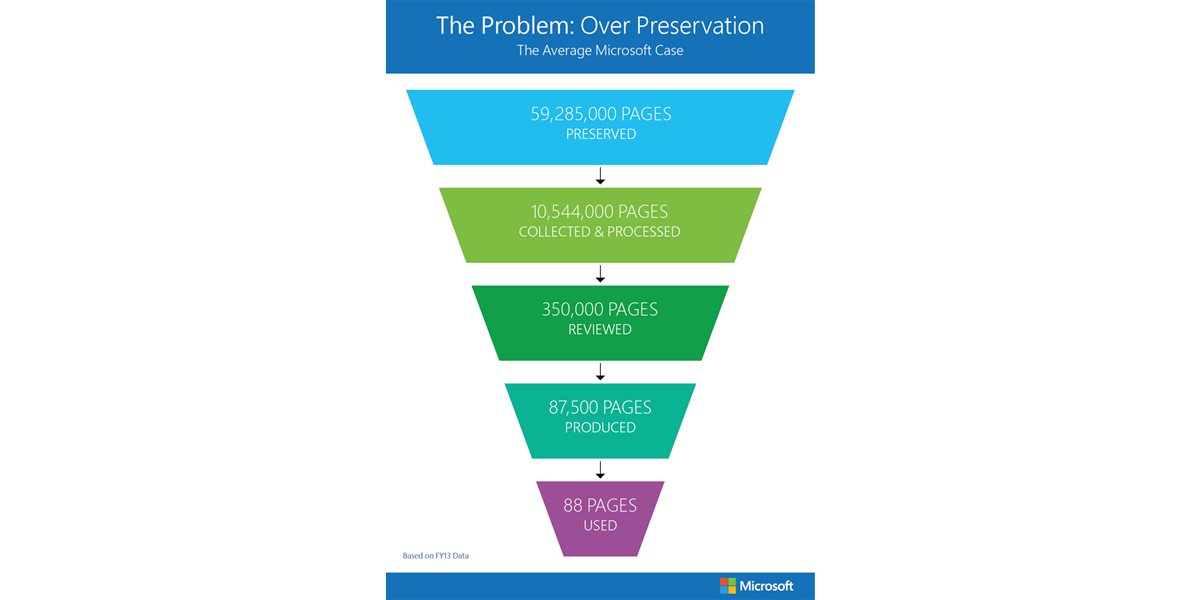Today, Microsoft posted an article about eDiscovery that shed some light on their internal preservation and review burden. “In FY 2010, Microsoft had to preserve about 39 terabytes in total to comply with obligations. By the end of FY 2013, that number grew to more than 261 terabytes.” They also note that the company has expended “$600 million on outside services to help with discovery in the past decade”.
Their blog post then continues with a discussion of how changes to the Federal Rules can help alter the burden of litigation, both by reducing the scope and by limiting the risk of sanctions. (Note, the deadline for public comment on the proposed changes is 15 Feb. 2014.)
Microsoft describes their litigation process as the typical narrowing of a population through the cycle of preservation, collection, processing, review, production and ultimate use, starting with nearly 60 million documents preserved to reach 88 pages of exhibits. They don’t discuss what methods they’ve used to find savings in the current eDiscovery environment, but do mention “manual review” which seems to leave open the possibility they’re not maximizing available technologies and methods to cut the existing burden without changes to the rules. There may be some savings to be found in applying current best practices.
More importantly, however, Microsoft seems to ignore their own responsibility for the explosion of electronic data.
With Exchange Server, Lync and countless other products, Microsoft has long helped add to the tremendous burden of preservation and review. They could, if so inclined, build their systems that are better equipped to cut the cost of review. As one of the prime suppliers of the technology used to generate the data that ultimately becomes part of discovery, customers might find significant value in products and services designed in a way that makes it possible to minimize noncompliance with retention policies, stores data in the most logical and deduplicated manner, allows for pre-collection evaluation of custodial information and even assist in implementing legal holds or review. Yet, the burden of discovery doesn’t seem to be a design or selling feature of many Microsoft systems.
Further, their desktop applications, including Word, Excel and PowerPoint, use file formats that are intentionally obfuscated and often complicated to examine. Making access to things like previous versions, tracked changes, hidden comments and speaker’s notes easier when processing for litigation would dramatically reduce the risk of numerous reviews. The files generated by these applications have also grown in size as new versions are developed and additional cruft must be jammed into the saved copy to create the same result.
While Microsoft may have some valid points regarding the rules, they hold in their hands a far more powerful weapon in fighting eDiscovery costs, but have not yet learned to wield it effectively.
